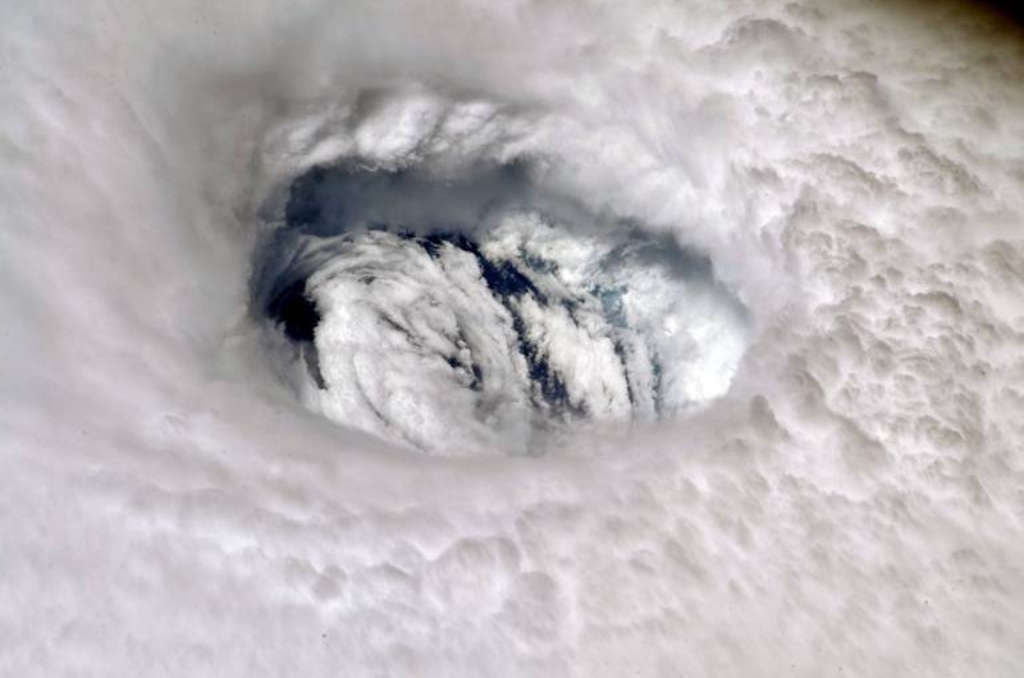Astronaut Nick Hague, aboard the International Space Station, posted this picture of Hurricane Dorian’s eye on Twitter on September 2, 2019. Dorian was a Category 4 at the time. Photo: NASA/www.miamiherald.com. Caption from www.miamiherald.com.
Florida’s residents and government officials are gearing up to face this reality even though the state is battling a global pandemic and its side effects at the same time. Florida emergency managers are accustomed to planning for hurricanes, but there are concerns for how this hurricane preparation will go as hurricane season gets closer and the coronavirus outbreak is still a threat to Floridians.
People are feeling a nagging sensation as questions and uncertainties linger on for the worst-case scenario. The biggest question for many will be if an already stretched-thin FEMA will be able to respond appropriately and when needed. There are also questions about how will shelters handle the social distancing guidelines put in place to help stop the spread of the virus. Should shelters open ahead of a hurricane threat, will vulnerable people be able to leave their homes?
“The biggest issue we’re facing is the sheltering of people in cramped-in areas,” said Frank Rollason, the director of emergency management for Miami-Dade County. “We’ve told people to stay away from each other for so long that if a hurricane comes and we need to open shelters, we’re fearful that they won’t come.”
Florida government officials called on the federal government on Wednesday, April 8 to issue guidelines for how the states should handle evacuations and storm shelters should the threat of a hurricane arise. Forecasters predict the next two months will generate an above-average storm season as the tropics reach the right conditions for one.
Broward County Mayor Dale Holness described the efforts of government officials and local politicians hustling to prepare as a “double disaster” of a hurricane strike amid a COVID-19 outbreak.
“We’re preparing for the worst obviously,” said Florida Governor Rick de Santis on Thursday, April 9. “Hopefully we don’t have to deal with a hurricane. But I think we have to assume that we’re going to have one.”
Under normal conditions, preparing for a major storm is complicated, requiring planning for shelters, food, energy, potable water and disaster cleanup. But a coast-to-coast coronavirus outbreak is making efforts harder to deal with by stressing out the Federal Emergency Management Agency. This stress on the Department forces the local agencies that respond to hurricanes into early action. The agencies responding early complicates the ability to pack thousands of people into the public schools that routinely serve as storm shelters.
Forecasters predict a more active-than-usual storm season this year, saying Florida may experience four storms this year that are Category 3 hurricanes or stronger.
Florida has been hit or narrowly missed by major storms in each of the past four years, the last time being a direct hit to the Panhandle by Category 5 Hurricane Michael. Florida’s U.S. senators sent a letter to FEMA Director Peter Gaynor asking the director to issue guidance to state and local governments about how they should prepare for a hurricane while social distancing measures are in place. All this has taken place while state and local planners have been quietly studying how to avoid a bad storm season amid a pandemic for weeks.
Hurricane season in Florida starts on June 1st and lasts until September 30.
Mike has more than 30 years of experience in marketing and public relations. He once owned his own agency and has worked with some of the largest brands in the world.

